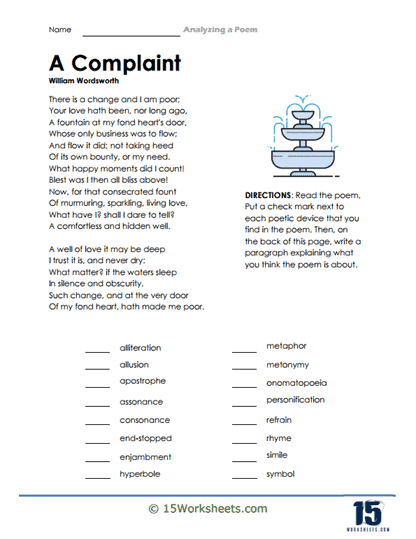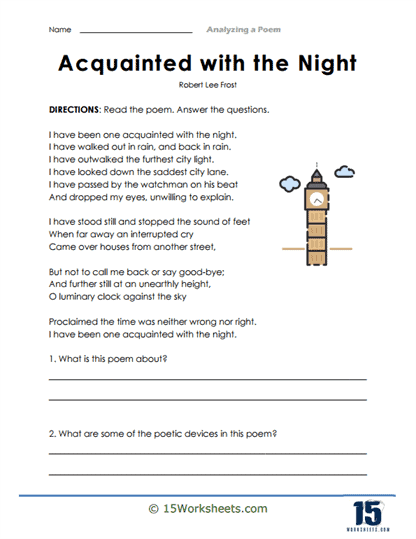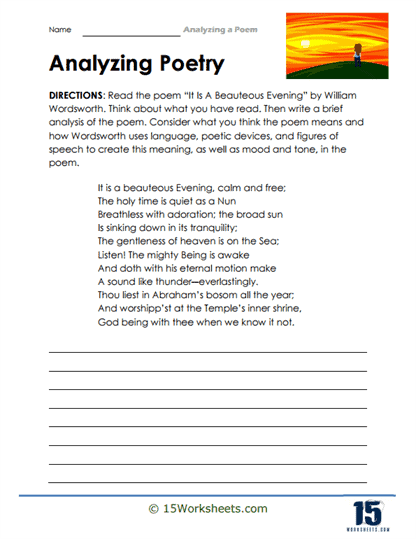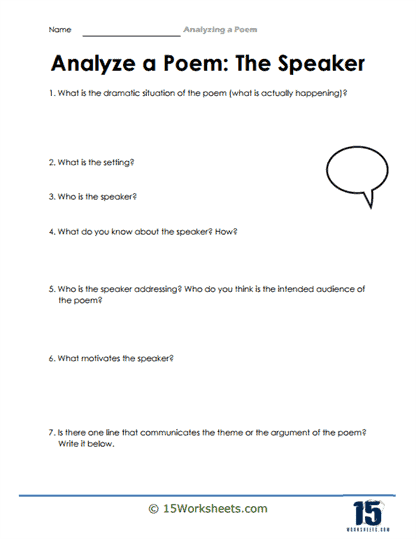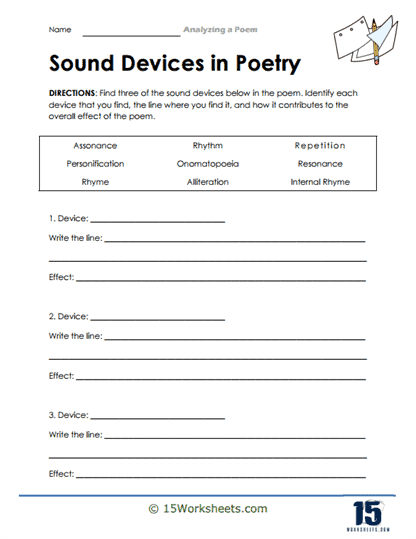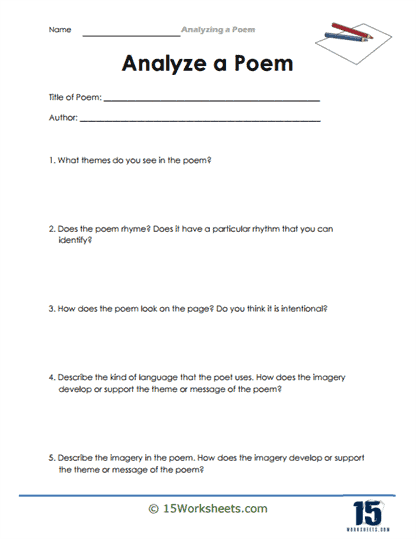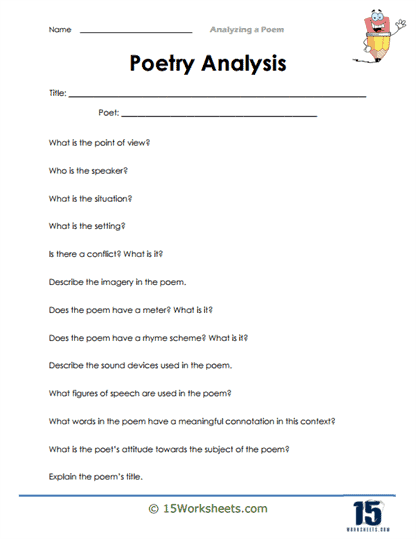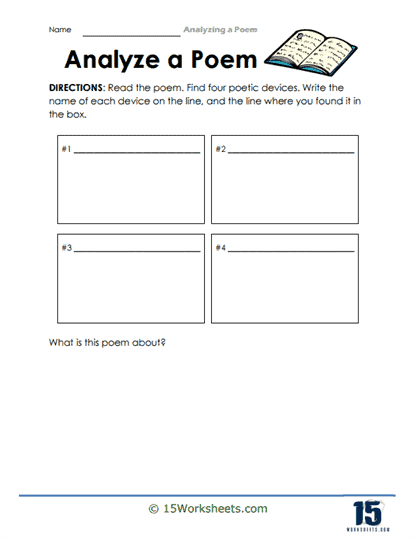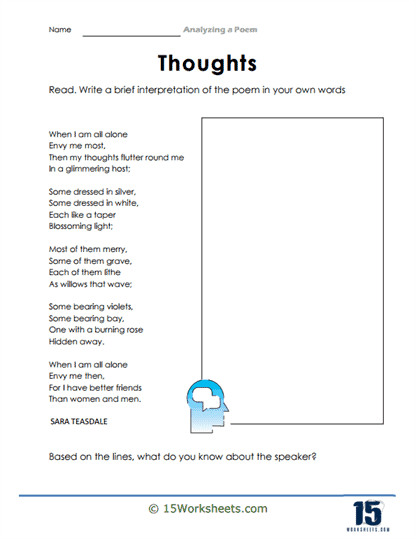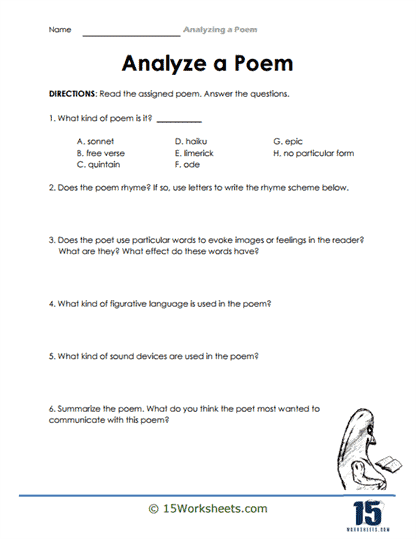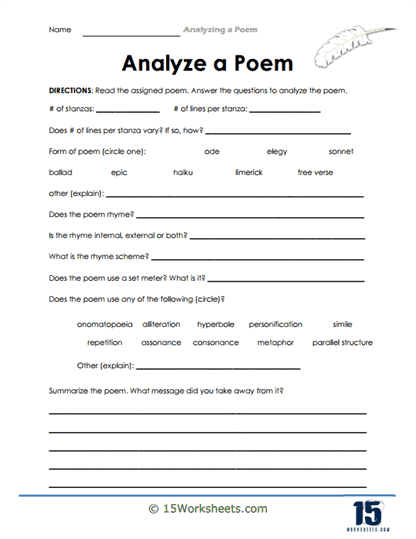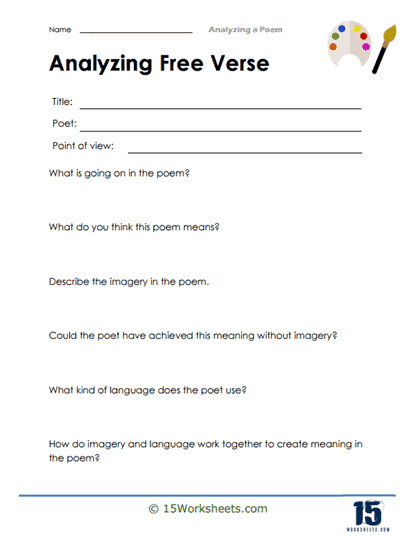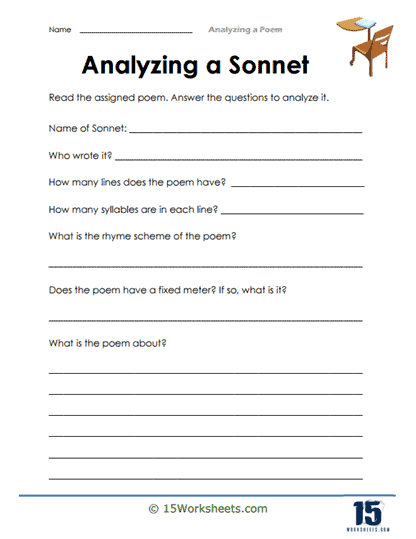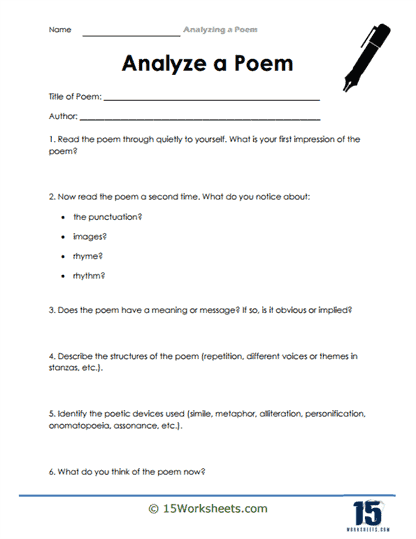Analyzing a Poem Worksheets
All About These 15 Worksheets
This collection of worksheets includes a range of activities and questions designed to guide students through the process of understanding and interpreting a poem.
These worksheets ask students to identify and define literary devices used in the poem, such as metaphor, simile, alliteration, imagery, and the like. There are also exercises that ask students to analyze the structure of the poem, including the rhyme scheme, meter, and stanza form.
These worksheets prompt students to identify the themes and messages conveyed by the poem and to explain how the literary devices and structure contribute to the poem’s overall meaning. Students may also be asked to reflect on their own personal responses to the poem and to consider how the poem relates to their own experiences or worldview.
By working through these worksheets, students can develop their critical thinking and analytical skills, as well as their appreciation for the beauty and complexity of poetry.
How to Analyze a Poem
Do you want to read old poetry like Shakespearian sonnets? But you don’t understand a word when you pick up those 14-lined poems?
If you don’t know how to analyze a poem, chances are that you won’t be able to understand most poems. Most people write poems that have hidden meanings. To analyze a poem, one needs to look beneath the surface of the words. With just a few tips and a little practice, anyone can master the art of analyzing poems. Here are a few tips to help you become a pro at analyzing poems.
Read the Poem A Few Times
The first and most important thing you need to do is to read the poem a few times. Reading the poem multiple times will help you understand the wording and debunk its meaning. Next, you can ask yourself the following questions:
What is the setting of the poem?
What is happening in the poem?
What is the poet trying to say?
Read the poem’s first and last lines since they include much information about what the author is trying to express.
Focus On the Imagery
Imagery is also called figurative language, which refers to descriptive words, e.g., her words ripped through my heart like a dagger. By focusing on the imagery used by the poet, you can start to understand the poem’s setting. Ask yourself what feelings the poet is trying to convey through the imagery.
Pay Attention to the Symbols
Since old times, poets have used specific symbols to symbolize a feeling or a deeper meaning. For example, Edgar Alan Poe used ravens to symbolize grief in his famous poem ‘The Raven.’ A great way to understand symbols is to research the poet you are reading and try to find out what types of symbols they use in their poetry.
Determine Whether the Poem Has a Storyline
There are many different types of poems, such as lyric and narrative. Narrative poems are longer and have a storyline, just like a novel. Determining if the poem has a storyline will help you understand what the poem is about. If the poem has a storyline, you can focus on the following questions to analyze the poem:
What is the conflict in the poem?
Do the conflicts get resolved in the end?
Is the poem suspenseful?
How many characters are there in the poem?
What role does each character play?
Determine the Poem’s Tone and Voice
To determine the poem’s voice, you need to ask yourself questions like whether the poet takes on a different persona and what the poet’s mood is. Doing so will help you learn about the poem’s mood and theme.
Focus On the Choice of Words
The poet’s word choice can tell the readers a lot about the theme and mood of the poem. Focus on the poet’s words, and ask yourself questions like what feelings or message the words convey. For example, a poem with words like gloomy or abyss will probably be a poem surrounding grief.
Focus On the Rhyming Scheme
Most people tend to ignore the rhyming scheme of the poem. However, the rhyming scheme can also help you understand the poem. Sometimes authors tend to focus on certain words when rhyming, and these words can tell you a lot about the poem. So, try to focus on the words the authors are using while rhyming to see if they are trying to focus on a certain word.
A Final Thought on Poem Analysis
There is no set of rules or a step-by-step guide on how to analyze a poem. Every poem is written differently, and you must use different methods to analyze it. However, the tips mentioned above will help you analyze most poems and simplify the process of analyzing poems for you.

